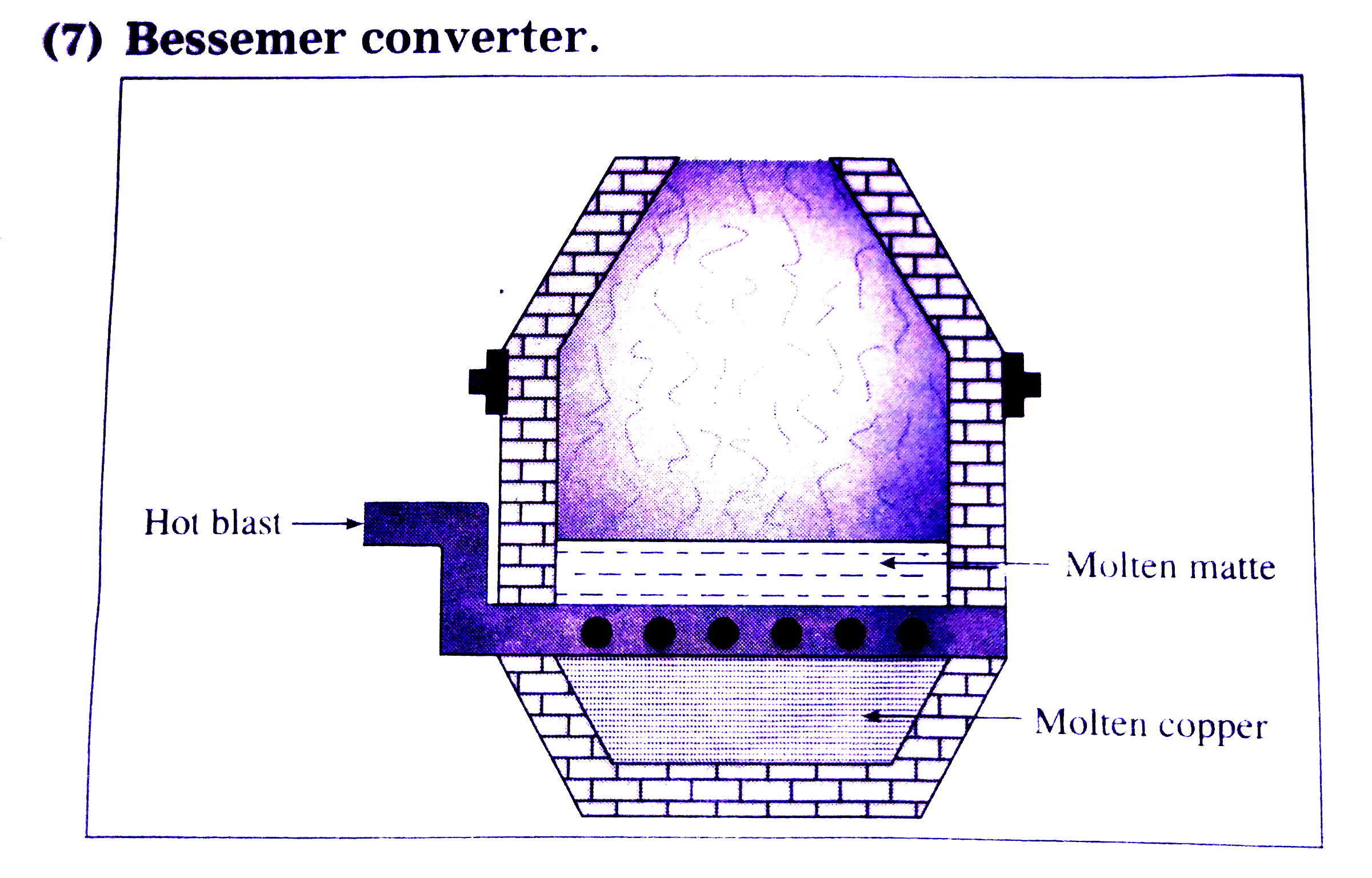Bessemer converter.
The following Structure are
Similar Questions
Fill in the blanks choosing appropriate word/ words from those given in the brackets : (gravity separation, magnetic separation, absence, presence, CuFeS2, Cu2S, froth flotation, aluminium, iron, smelting, pure, impure, mines, copper, silver, sulfide, zinc, chromium nickel, tin, blister copper, Cus, Fes, thermal, electrical, argentite or silver glance (Ag2S), cuprous oxide, cuprous sulfide.)
Copper obtained from Bessemer converter is known as.......
View SolutionFill in the blanks choosing appropriate word/ words from those given in the brackets : (gravity separation, magnetic separation, absence, presence, CuFeS2, Cu2S, froth flotation, aluminium, iron, smelting, pure, impure, mines, copper, silver, sulfide, zinc, chromium nickel, tin, blister copper, Cus, Fes, thermal, electrical, argentite or silver glance (Ag2S), cuprous oxide, cuprous sulfide.)
Copper obtained from Bessemer converter is known as.......
View Solution
Knowledge Check
Consider the following statement: Statement-1: In extraction of iron from haematite ore, the reduction reactions take place only in the lower temperature range in the blast furnace.
Statement-2:Calamine is an carbonate ore of zinc. ltbr Statement-3: The principle opre of aluminium, bauxite, usually contains silica, iron oxides and titanium, oxide as impurities.
Statement-4:Solidified copper obtained from silica lined convertor (Bessemer converter) has blistered appearance due to the evolution of SO2 and arrange in the order of true/false.AFTTTBFTFFCFFTTDTFFTConsider the following statements :
S1: In extration of iron from haematite ore, the reduction reactions take place only in the lower temperature range in the blast furnace.
S2: Calamine in an carbonate ore of zince.
S3: The principle ore of aluminium , bauxite , usually contains silica, iron oxides and titanium oxide as impurities.
S4: Solidified copper obtained from silica lined conventor ( Bessemer converter ) has blistered appearance due to the evolution of SO2.
and arrange in the order of true / false.AFTTTBFTFFCFFTTDTFFTConsider the following statements :
S1: In extration of iron from haematite ore, the reduction reactions take place only in the lower temperature range in the blast furnace.
S2: Calamine in an carbonate ore of zince.
S3: The principle ore of aluminium , bauxite , usually contains silica, iron oxides and titanium oxide as impurities.
S4: Solidified copper obtained from silica lined conventor ( Bessemer converter ) has blistered appearance due to the evolution of SO2.
Which are correct statements?AI and IIBII and IIICI and IIIDII, III and IV
Fill in the blanks choosing appropriate word/ words from those given in the brackets : (gravity separation, magnetic separation, absence, presence, CuFeS2, Cu2S, froth flotation, aluminium, iron, smelting, pure, impure, mines, copper, silver, sulfide, zinc, chromium nickel, tin, blister copper, Cus, Fes, thermal, electrical, argentite or silver glance (Ag2S), cuprous oxide, cuprous sulfide.)
Copper obtained from Bessemer converter is known as.......
View SolutionWhich of the following reaction does not occur in Bessemer’s converter ?
View SolutionWhich of the following reaction does not occur in Bessemer’s converter ?
View SolutionWhich of the following reaction does not occur in Bessemer's converter?
View SolutionWhich of the following reaction does not occur in Bessemer’s converter ?
View Solution
